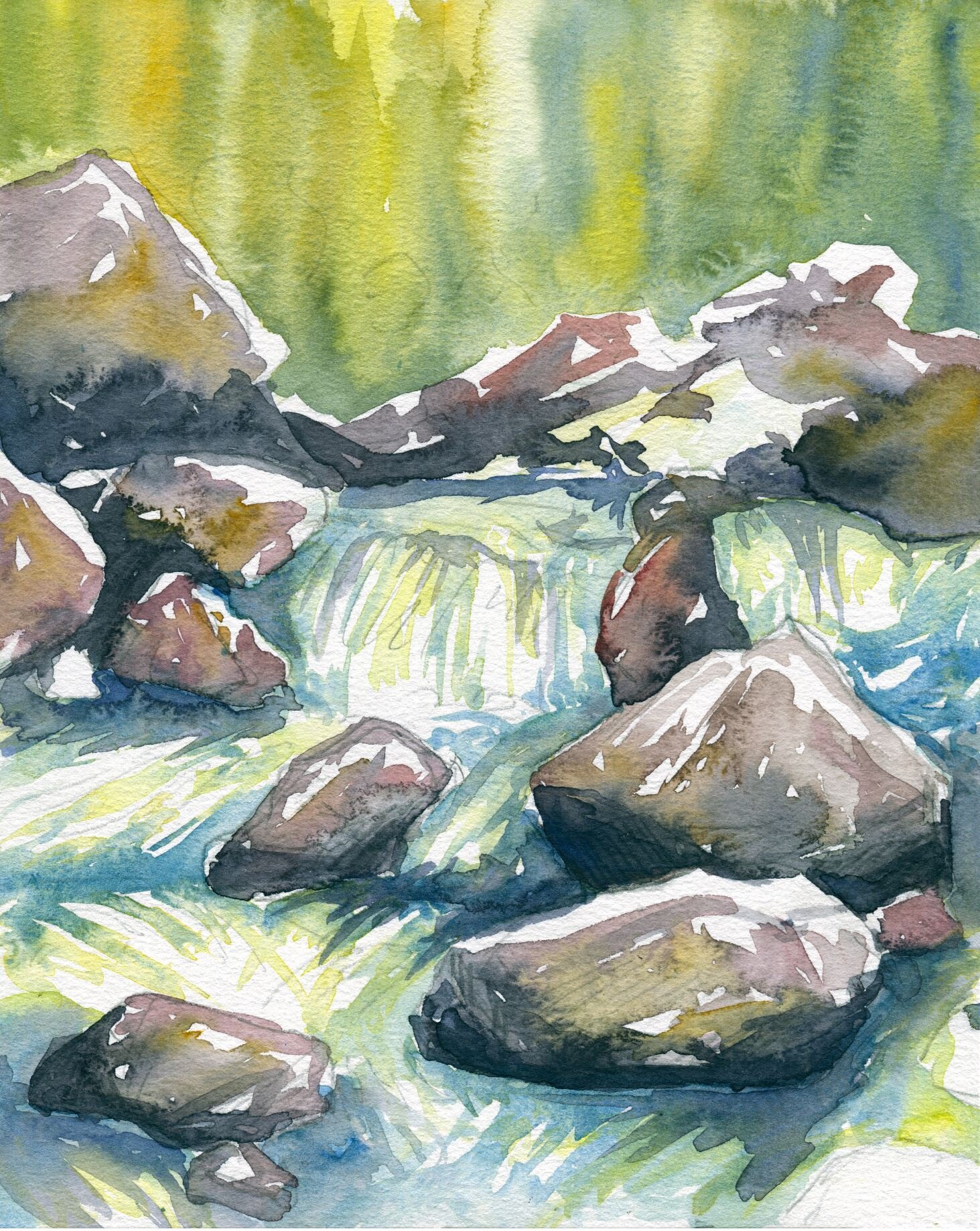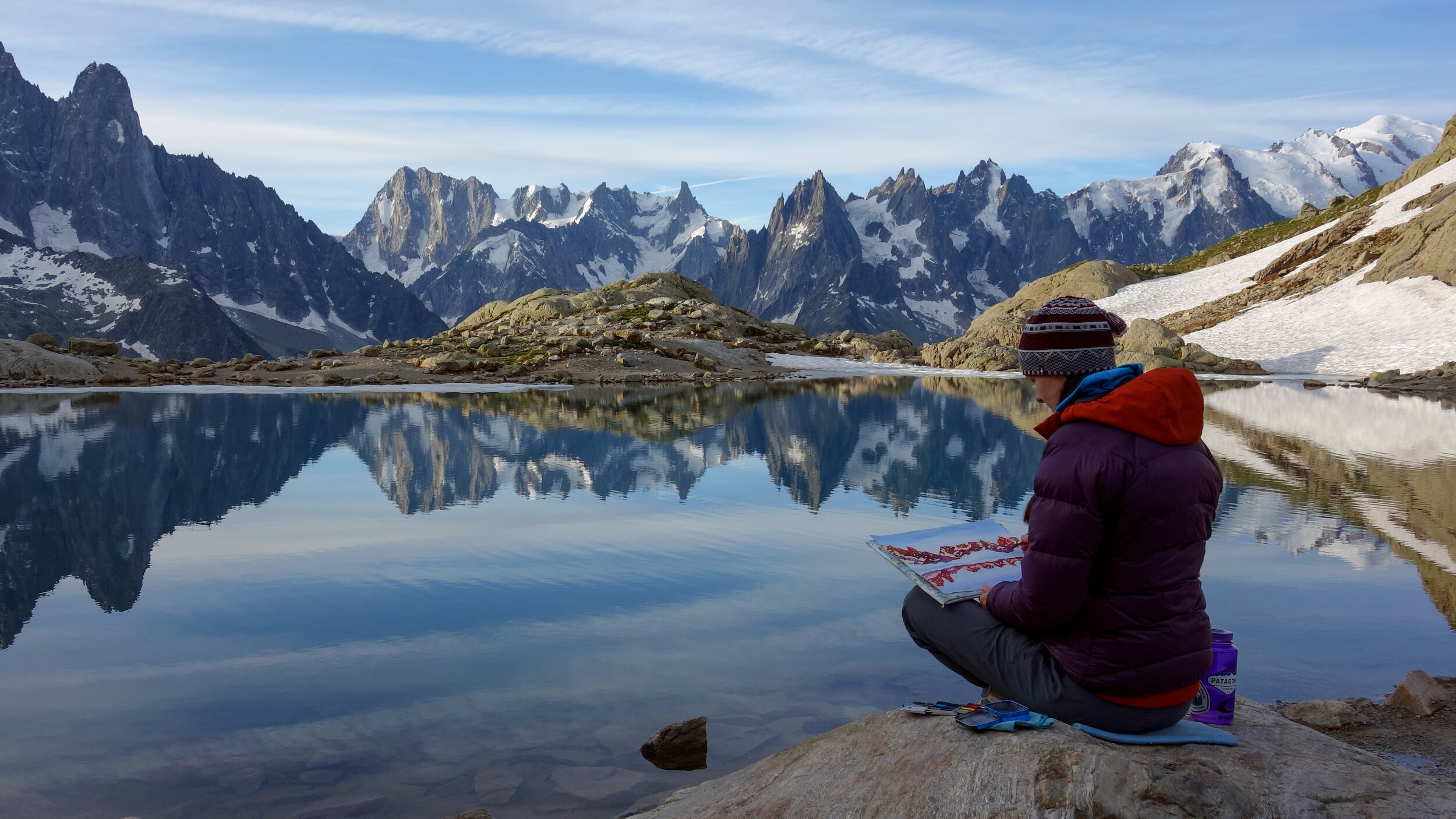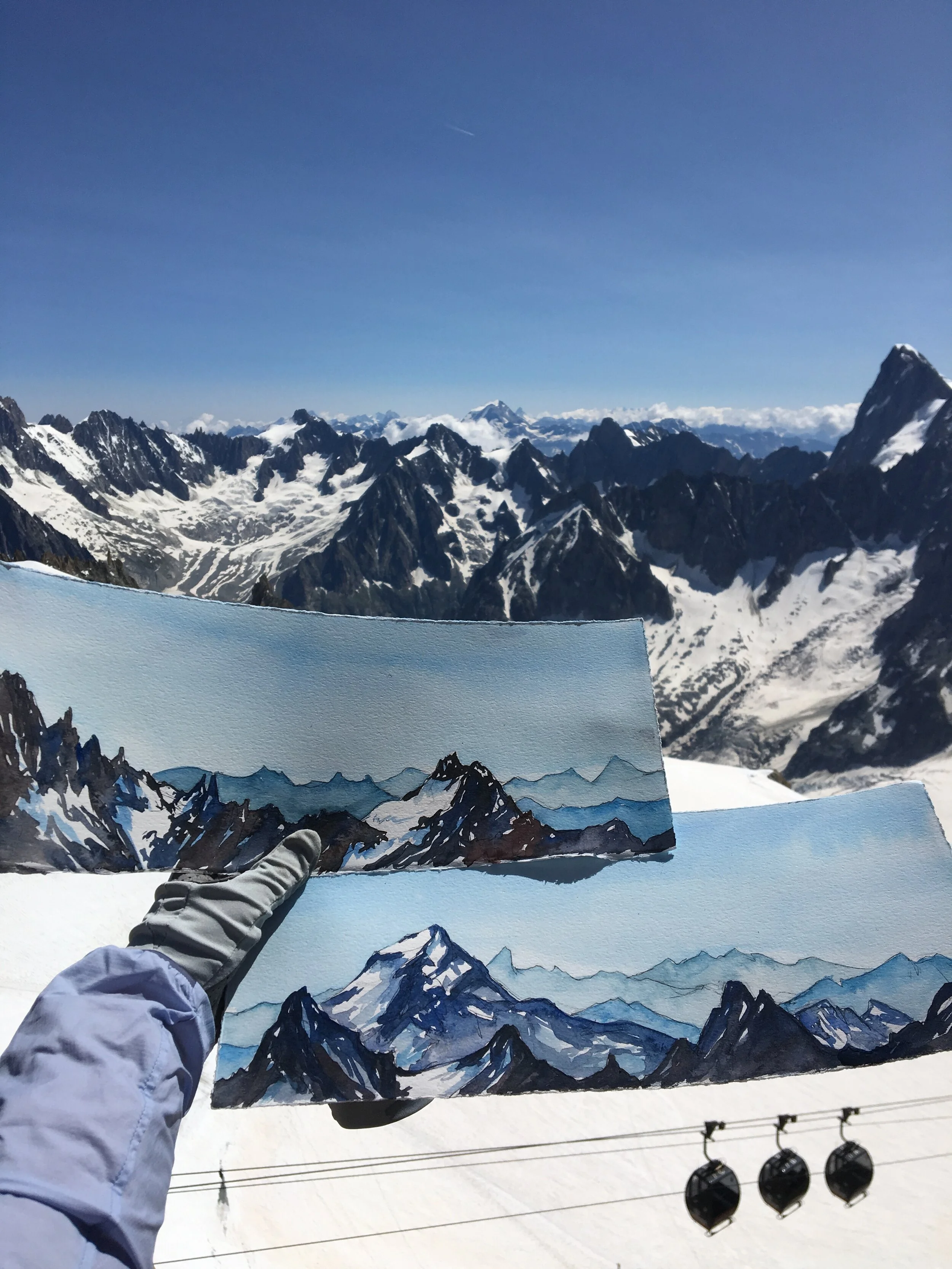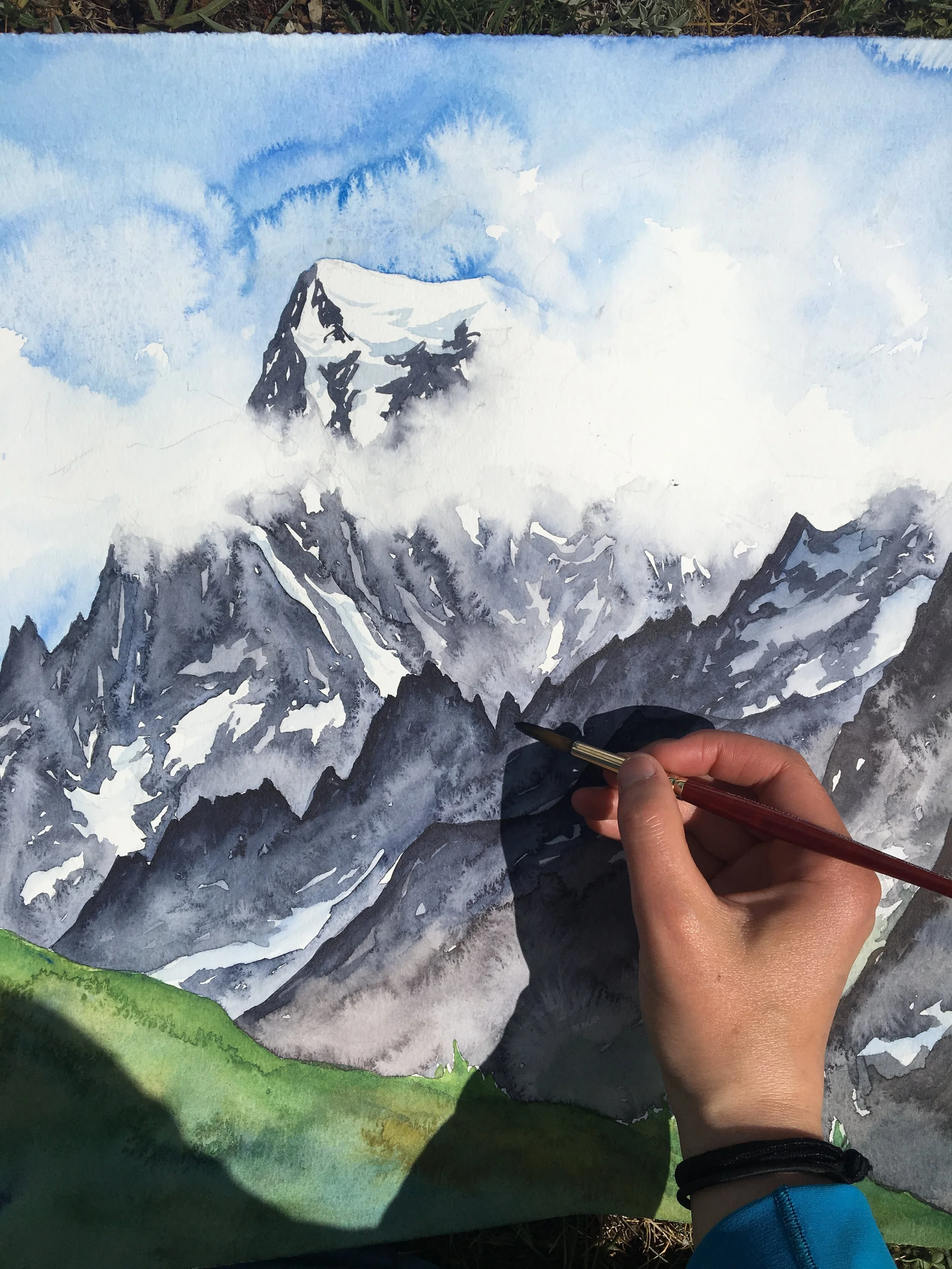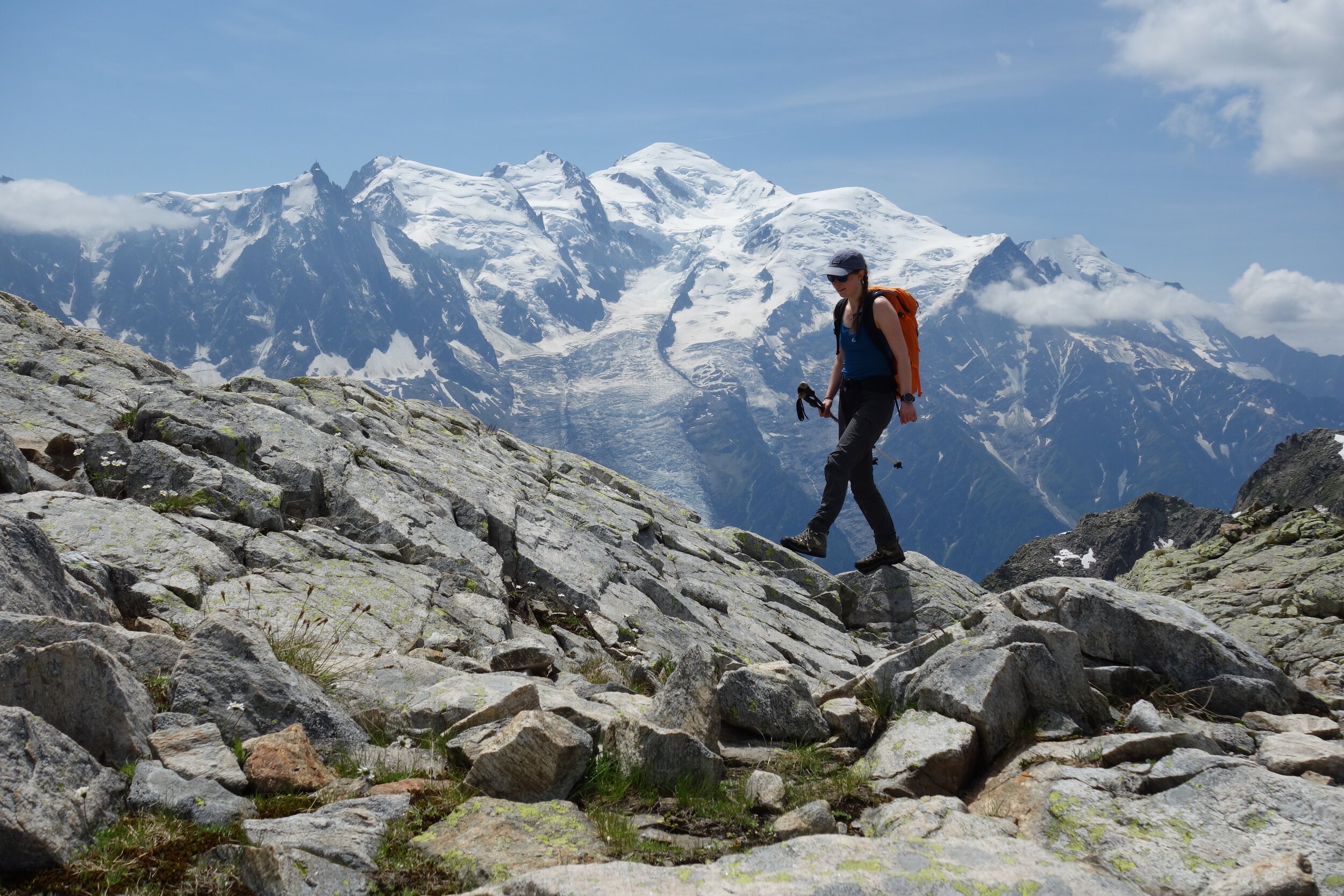
CHAMONIX RESIDENCY
In July 2019 I spent a month in Chamonix, France as an artist in residence with CREA Mont Blanc. My collaboration with CREA led me to venture into the mountains each day to paint elements of the landscape impacted by climate change, with a special emphasis on glaciers and alpine terrain (which are the focus of CREA’s research).
My time in Chamonix coincidentally overlapped with one of the worst heat waves to hit Europe in years. Some days, I saw thermometers in the valley read 35.5 C (95.9 F), an exceptionally high temperature for a high mountain valley. The record, 36 C on June 29th, was the highest temperature on that date since 1947.Even at higher elevations the heat persisted, and my paintings were shaped by listening to rockfall and crumbling glaciers, watching raging snowmelt, and observing meters of snow cover disappear in days.
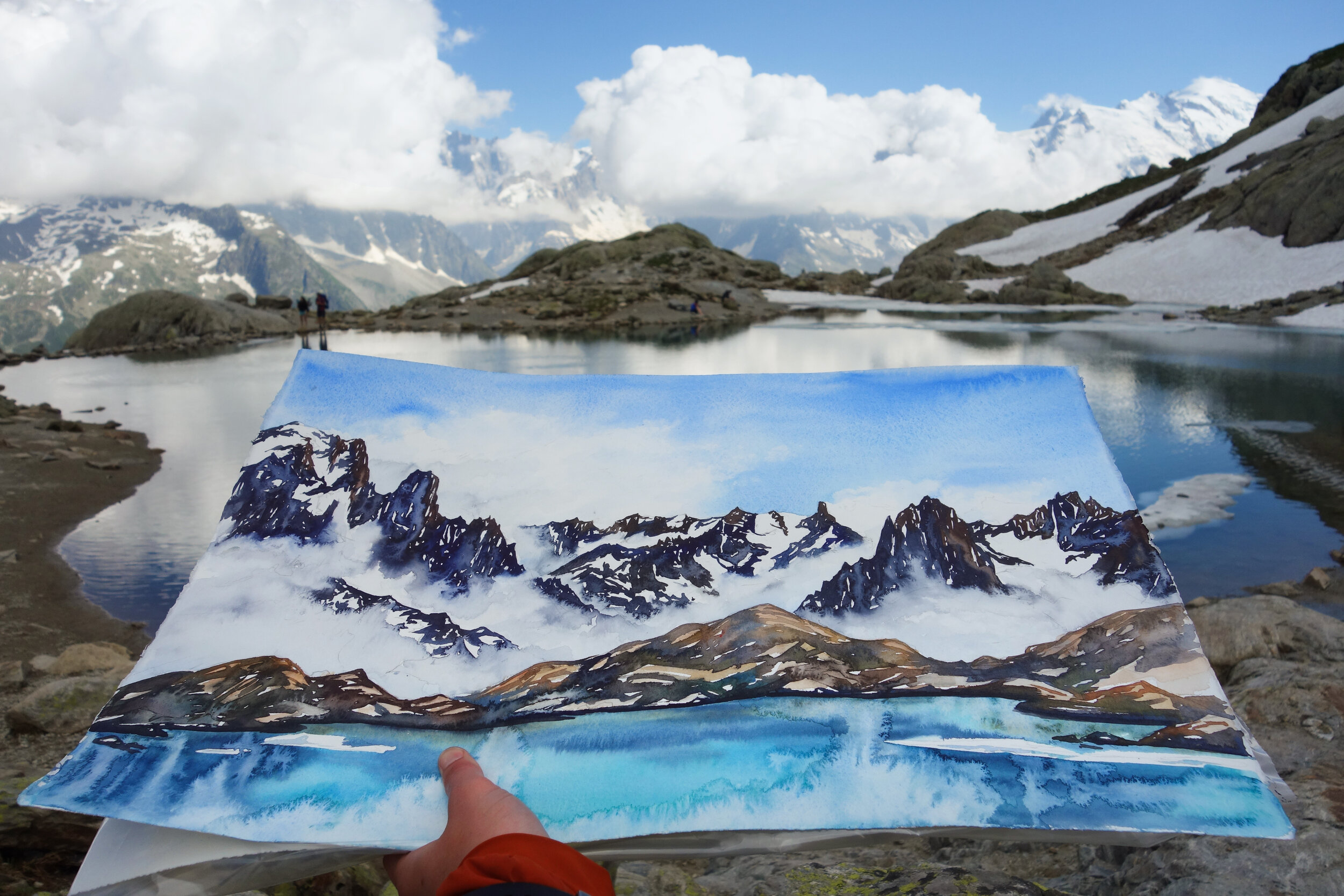
The Chamonix valley is an incredible alpine area that attracts visitors from all over the world. It is also a landscape that clearly shows the impacts of climate change, if you know where to look.
The primary visual barometers of change are the glaciers which are receding at alarming rates and the rock formations that are crumbling due to melting permafrost. Each year climbing routes disintegrate into the valley with roars of rockfall and the glaciers retreat farther and farther up the mountains.
A year later and I am still unpacking my experience in Chamonix. This valley is unlike anywhere else in the world I have been; to see the tops of the peaks, you have to tilt your face to the sun they are so massive. It is incredibly humbling and awe inspiring.
Hiking and painting alone nearly every day, all day, was an empowering and freeing experience. I had the gift of time, allowing me to sit for hours observing different places and connecting what I had learned about the changing landscape with what I witnessed in person.
Special thanks to CREA Mont Blanc for the opportunity to work with you and Run the Alps for their support during the trip!


